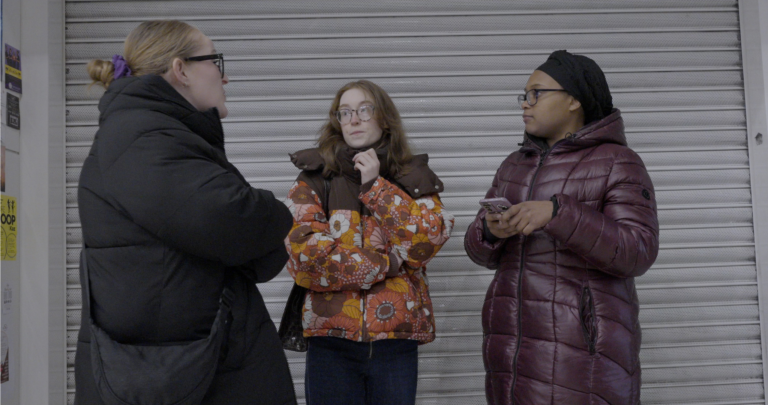Creative Resilience and End-of-Life Care: Insights from the Jarman Now Project
Dr Elisa Oliver discusses the first in a series of feasibility events supported by AHEAD in collaboration with Jarman Now.

Dr Elisa Oliver discusses the first in a series of feasibility events supported by AHEAD in collaboration with Jarman Now.
Jarman Now is a research network continuing a dialogue with debates raised by the practice of artist Derek Jarman through events, commissions and collaborations. I am director of the project managing its outputs, identity and building partnerships. My own research and practice explores interdisciplinarity and is concerned to find new points of interpretation and access to familiar material through innovative programming and research.
For these events Jarman Now is working with hospice workers in the southeast particularly the Queer Grief group based at St Michael’s Hospice in St Leonard’s, East Sussex and co-ordinated by Dr Michaela Ross, Kings College Research Fellow in social medicine.
Jarman was an artist, writer filmmaker and gay activist. Diagnosed with AIDS he succumbed to the disease in 1994. Over the last years of his life, it was his creativity that sustained him and made this period of his life an active and creative one. During this time, he made the famous garden at Prospect Cottage in Dungeness, Kent and continued to paint, write and make films. His film ‘Blue’ comprised exclusively of a blank screen of blue, explores the loss of his sight as he moved towards the end of his life.
His creative resilience in the face of terminal health has been an example to many in terms of a ‘good death’. The hospice is keen to find ways to work with the hospice community to similarly enrich their patient’s sense of self in this period of ‘life’ through embracing methods of creative processing that will begin both a celebration of a life and the grief at its loss.



Gardening and being in nature, following Jarman’s example, has been one key area of exploration. This event was led by gardener and photographer Howard Sooley, who co -created the garden at Prospect with Derek and was a long-term friend, going on trips to collect plants and view gardens, such as Monet’s at Giverny with Jarman. Sooley also took the now famous photographs of the Prospect Cottage Garden which have cemented it in the public imagination.
Howard took myself, Michaela and hospice workers on a tour of the garden at Great Dixter. Dixter is a unique garden and community in Northiam, East Sussex, created by Christopher Lloyd after his father and the architect Edwin Lutyens built the house and gardens in 1910-12. It is now managed by head gardener Fergus Garrett.
It is a unique garden that seeks a particular philosophy of gardening in which there is no over-management of plants which are allowed to grow unhampered and un-invested with the ideology of a ‘cultivated’ and ‘managed’ garden. Process is what is key here creating a space where you move and sit in the garden in particular ways and where borders are often created via pots and hence can be moved about and rearranged a-new creating a creative process akin to that of painting.
Sooley talked about the community nature of gardening here, gardening together, which he often did with Jarman, is a particular sense of being together, productive, creative and in a communion with nature and place facilitating a particular sense of well-being and self. Sooley told us how at Dixter once a plant or tree dies it is not removed or tidied up, it is allowed to go its own course reflective of its right to be there and take up space. Sooley in fact began the talk next to a tree which was in the process of dying but had been allowed to maintain its space in the main lawn in front of the house.
Sooley also talked about how gardening keeps us fully in a moment in time. Obviously changing seasons reflect that the garden is always different, but more than that, the garden really holds you in a moment in time because in a range of subtle ways the garden will never be exactly the same again as the current moment in which you are seeing and gardening in it. The planting and borders constructed through containers in many ways underlines that in that they are regularly shifted and rearranged connecting to that very specific engagement with time.



In this way Great Dixter reflects the qualities that Jarman got from gardening and also shows the legacy that Prospect Cottage and Great Dixter have for supporting end of life care, the sense of being in a moment, the right to take up space regardless, the sense of contribution to the self and the community that the focus on a moment in time can achieve and which can be facilitated through the act of gardening.
Image credits : Jarman Now project, Peter Fillingham, Howard Sooley
Social Media for collaborators


